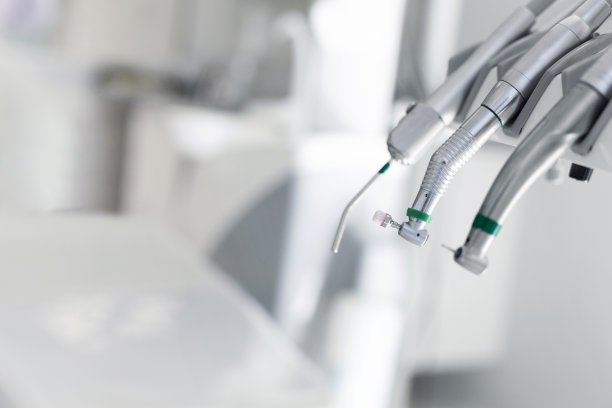Innovative Advances in Dental Implant Technology Enhancing Patient Outcomes and Reducing Recovery Times for a Brighter Smile
Summary: As dental implant technology continues to evolve, innovative advancements are making a significant impact on patient outcomes and recovery times. This article explores four key areas: the development of smarter implant materials, advancements in 3D imaging and modeling, minimally invasive surgical techniques, and powerful post-operative care. These innovations not only enhance the overall experience for patients but also work to achieve a brighter smile with reduced downtime. By delving into these aspects, we discover how modern dentistry is transforming lives and establishing new standards in oral health.
1. Smarter Implant Materials Enhancing Longevity

Recent advancements in dental implant technology have introduced smarter materials designed to enhance the longevity and compatibility of implants. Today, materials are being infused with bioactive properties that promote osseointegration, which is the process where the implant fuses with the bone. This biocompatibility is crucial, as it minimizes the risk of rejection and optimizes stability, ensuring a strong foundation for the replacement tooth.
Moreover, advancements in surface treatments have further improved the osseointegration process. Roughened or coated implant surfaces encourage faster bone growth and strengthen the connection between the implant and jawbone. This innovation significantly reduces the time required before the patient can receive the final restoration, effectively shortening recovery periods and enhancing overall patient satisfaction.
Additionally, newer alloys and titanium treatments have proven to be resistant to wear and corrosion, leading to products that not only last longer but contribute to overall oral health. These long-lasting, biocompatible materials represent a monumental leap forward in implant technology.
2. Advancements in 3D Imaging and Modeling
The integration of 3D imaging and modeling into dental implant procedures has transformed the way these surgeries are planned and executed. Precise imaging techniques—such as cone beam computed tomography (CBCT)—allow dental professionals to obtain detailed images of a patient’s oral and maxillofacial region. This level of detail facilitates improved diagnosis and treatment planning, resulting in higher success rates for implants.
3D modeling enables the creation of patient-specific templates that guide dentists during surgery. With accurate positioning of implants tailored specifically to a patient’s anatomy, the likelihood of complications is dramatically reduced. This meticulous planning translates into smoother operations and quicker recovery times.
Furthermore, 3D imaging allows for simulations that offer patients a preview of their expected outcomes. This transparency increases patient confidence and adherence to treatment plans, directly influencing their overall experience. As technology progresses, so too will the ability to visualize and perfect surgeries even before they begin.
3. Minimally Invasive Surgical Techniques
One of the most significant advancements in dental implant technology is the rise of minimally invasive surgical techniques. Techniques such as flapless surgery utilize smaller incisions and less tissue manipulation, leading to a more comfortable experience for patients. The reduced invasiveness shortens procedure time and minimizes trauma to the surrounding tissues, which is crucial for enhancing recovery speeds.
Alongside this, guided surgery using precision tools can further streamline the implant placement process. This targeted approach reduces the need for extensive incisions and the associated recovery time, making it an appealing option for both patients and practitioners.
The benefits extend beyond surgery, as minimally invasive techniques lead to less post-operative pain and swelling, improving the overall patient experience. Most patients can resume their daily activities sooner and with less discomfort, marking a true advancement in dental care.
4. Powerful Post-Operative Care Innovations
Innovations in post-operative care are equally important to the success of dental implant procedures. Implementing enhanced pain management techniques, such as the use of localized anesthesia and prescriptions for effective pain relief medications, ensures a smoother recovery for patients. This attention to comfort can significantly influence patient satisfaction and adherence to follow-up care.
Furthermore, integrating digital technologies into follow-up care has provided patients with real-time monitoring of their recovery. Remote consultations and telemedicine platforms allow professionals to track healing progress without requiring in-person visits, thus saving time and improving accessibility.
Educational resources surrounding effective aftercare also empower patients with knowledge to enhance their recovery process. Being informed about proper oral hygiene practices and dietary recommendations can drastically reduce complications. This combination of pain management, digital follow-ups, and patient education promotes a more effective healing journey.
Summary: The advancements in dental implant technology discussed in this article illustrate a transformative journey in modern dentistry. From smarter materials that promise longevity to advanced surgical techniques and robust post-operative care, every innovation is aimed at enhancing patient outcomes while ensuring a smooth recovery experience. Collectively, these improvements not only foster better oral health but also empower individuals to embrace their brighter smiles with confidence.
This article is compiled by Vickong Dental and the content is for reference only.


